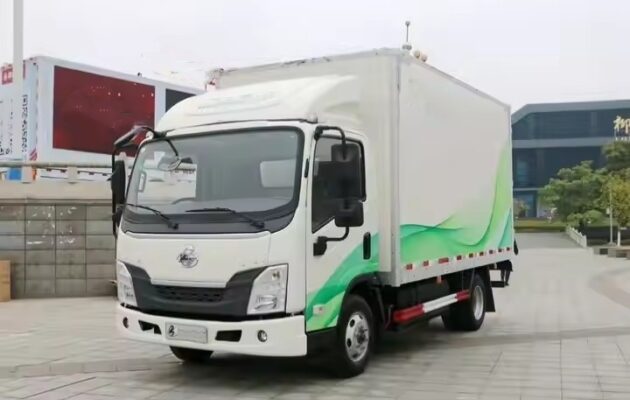Electric Truck Knowledge
Crashworthiness Safety of Filled Battery Packs
1. Introduction
Lithium-ion batteries are widely used in various industrial applications, and their safety has always been a key research topic. Studies have shown that mechanical abuse is one of the main causes of short circuits in lithium batteries during traffic accidents. Many studies have investigated the mechanical abuse of batteries. Wang Zhenpo et al. evaluated the safety of battery packs in pure electric buses during side collisions.
In actual use, lithium-ion batteries are usually assembled into battery packs, making their mechanical behavior more complex than that of a single cell. Therefore, it is necessary to propose protective methods specifically for battery packs.
Some studies have already been conducted on battery packs. Liu et al. used numerical simulations to study the energy density of battery packs under different arrangements and determined the optimal configuration for maximum energy density. Hu et al. explained the failure process of battery packs under impact loads using stress wave theory. Li Xiangxue et al. studied the use of flame-retardant materials in contact batteries. Nguyen et al. inserted hollow circular tubes into cylindrical battery packs to improve their mechanical safety. However, this method reduced the energy density of the battery pack by 35%. To compensate for this drawback, they expanded the battery pack’s placement area into the secondary safety zone of the vehicle.
With the increasing demand for extended driving range, it is essential to improve the crashworthiness of battery packs while minimizing any reduction in energy density.
This study investigates the crashworthiness of cylindrical battery packs filled with ABS resin (acrylonitrile-butadiene-styrene copolymer). By combining experiments and numerical simulations, the study compares the impact resistance of ABS-filled and unfilled battery packs. Further optimization is performed using metallic foam as the filling material, and the effects of different foam metal densities on battery pack crashworthiness are studied through numerical simulations. The findings provide insights into improving the safety of battery packs under impact conditions.
2. Experiments
2.1 Battery Pack and Filling Material Samples
The batteries used in this study are Panasonic 18650 cylindrical lithium-ion cells, with a diameter of 18 mm and a length of 65 mm. Each battery consists of a casing and a core. The casing primarily serves as a protective shell and bears certain loads, while the core stores energy and consists of current collectors, active materials, and separators.
Before the experiments, each cell in the battery pack was fully discharged to a cutoff voltage of 2.7V at a discharge rate of 1C (SOC = 0) to ensure safety. The test sample consisted of 23 tightly packed batteries arranged in five rows.
To investigate the effect of filling materials on battery pack safety, an ABS resin-filled battery pack was designed. The ABS filling was manufactured using 3D printing technology, forming a rectangular solid with 23 pre-drilled holes (18 mm in diameter) corresponding to the battery arrangement. The minimum gap between adjacent holes was 1 mm.
The energy density of the unfilled battery pack was 1.97 J/mm³, whereas the ABS-filled battery pack had an energy density of 1.78 J/mm³, representing only a 9.6% reduction.
2.2 Loading Device and Measuring Instruments
The impact tests were conducted using a Coesfeld Magnus 2000 drop-weight impact tester. Different impact conditions were achieved by varying the weight of the drop hammer, the drop height, and the compression of additional springs:
- Unfilled battery pack: M = 4.77 kg, V = 4.65 m/s
- ABS-filled battery pack: M = 10.28 kg, V = 11.8 m/s
The impact force was measured using a force sensor mounted on the impact head. To monitor voltage changes before and after impact, nickel strips and fine wires were welded onto the battery terminals and connected to a VH-DCI connector. A Keysight U2300A multi-channel data acquisition system recorded the voltage signals.
Battery deformation was recorded using a high-speed camera. The custom-made fixture consisted of a piston and a cylinder, which held the battery pack securely during impact. The battery pack was placed inside the cylinder, and the piston could slide up and down within it.
2.3 Experimental Results Analysis
The force-time curves collected by the force sensor on the drop hammer showed that the impact process for both battery packs consisted of two phases:
- First Phase: The force rapidly increased and then quickly decreased, forming a short-duration peak. This phase corresponds to the moment the drop hammer first contacts the piston, which then quickly accelerates to match the hammer’s velocity.
- Second Phase: The force remained at a high level for a longer duration, corresponding to the acceleration and deformation of the battery pack.
Since the piston generates significant inertial force, the actual force acting on the battery pack (FB) was calculated using D’Alembert’s principle:
FB=FH−mP⋅aPFB = FH – mP \cdot aP
where:
- FHFH is the force measured by the sensor,
- mPmP and aPaP are the mass and acceleration of the piston, respectively.
Using high-speed imaging, the displacement of the piston during impact was analyzed, and its acceleration was obtained through second-order differentiation.
For the unfilled battery pack, the impact force initially affected only the first row of batteries, and deformation gradually spread to other rows. This indicates that the deformation process was influenced by the inertia of the batteries, resembling a stress wave propagating from the impact side to the far end.
For the ABS-filled battery pack, deformation spread to the last row in 0.2 ms, compared to 0.6 ms for the unfilled battery pack. The increased modulus and stiffness of the filling material accelerated stress wave propagation, allowing more batteries to share the load earlier and reducing the likelihood of localized damage.
Table 1 compares the impact energy, velocity, and peak force between the two battery packs. Although the ABS-filled battery pack experienced higher impact energy, speed, and peak force, its deformation was significantly smaller, demonstrating that the filling material improved structural rigidity.
Battery failure was defined as a voltage drop greater than 0.5V that did not recover within three days after impact. In the unfilled battery pack, two cells failed, whereas in the ABS-filled battery pack, no failures were observed. This indicates that the ABS-filled battery pack exhibited superior safety performance under harsher impact conditions.

3. Numerical Simulation
3.1 Model Setup
Numerical simulations were conducted using ANSYS/LS-DYNA. The model consisted of:
- Rigid constraint plates (MAT_020 Rigid Body material) to simulate the experimental fixture
- An impact plate with mass and velocity identical to the drop hammer
- Battery cells modeled using the CRUSHABLE_FOAM material
The batteries were assigned a tensile modulus of 0.47 GPa, a failure stress threshold of 14.5 MPa, and a density of 2.7×10−62.7 \times 10^{-6} kg/mm³. The ABS material was modeled using the PIECEWISE_LINEAR_PLASTICITY model, incorporating strain rate effects.
To optimize crashworthiness, metallic foam was also studied. Three densities—soft (SFBP), medium (MFBP), and stiff (HFBP)—were used. The mesh size was set to 0.5 mm to ensure accuracy, and simulations were performed in plane-strain conditions to save computation time.
3.2 Simulation Results Analysis
Simulated force-time curves for both battery packs matched experimental results well, confirming simulation reliability. The unfilled battery pack showed two cell failures, while the ABS-filled battery pack had none, aligning with experimental observations.
Energy absorption analysis revealed that in the ABS-filled battery pack:
- 49% of impact energy was absorbed by the filling material,
- 29.7% by the batteries,
- Remaining energy was reflected.
Conversely, in the unfilled pack, 83.4% of energy was absorbed solely by the batteries, increasing failure risk.
The stress distribution confirmed that the ABS-filled battery pack had a more uniform load distribution, reducing localized stresses and improving crashworthiness.

